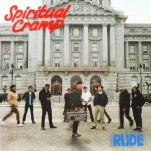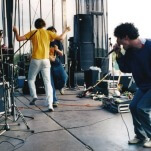Celebrating the African-American Shoebox Lunch

Photo by Skovdal & Skovdal
The great American road trip occupies a special place in the popular imagination. For lovers of Kerouac novels, it’s a romantic rite of passage; for others, it’s the chance to explore nature’s amazing bounty on a shoestring budget or cement lasting friendships. Whatever the reason for setting off, the iconic ritual of journeying across America is so overwhelmingly celebrated that it’s hard to imagine that until recently, it represented a stumbling block for the African-American community.
After all, part of the road trip’s appeal is its simplicity and its accessibility. All you need is a working car, gas, a handful of friends, a map and someone in charge of the snacks (or someone with a keen eye for the red, white and yellow In ‘n’ Out sign).
But the intersection of food and travel is precisely one way in which black travelers were often held back from embarking on cross-country journeys.

Photo by Matthew Ray
-

-

-

-

-

-

-

-

-

-

-

-

-

-

-

-

-

-

-

-

-

-

-

-

-

-

-

-

-

-

-

-

-

-

-

-

-

-

-

-














































